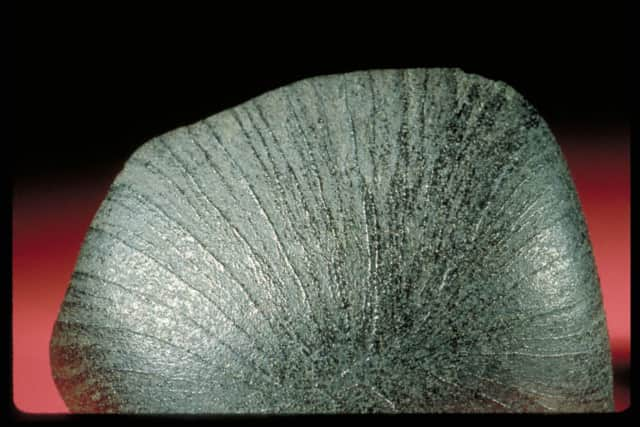Century old Lafayette meteorite mystery may be solved thanks to pig vomit
This article contains affiliate links. We may earn a small commission on items purchased through this article, but that does not affect our editorial judgement.
A mystery that has lasted over a century regarding where a piece of a Mars meteor came from may have been solved by a Glasgow student, in no small part due to the digestive problems pigs may have had from around a specific area of the USA.
Dr. Aine O’Brien, an environmental and planetary organic geochemist at the University of Glasgow, took on the task of discovering how the Lafayette meteor ended up in a drawer at Perdue University, Indiana in 1929 when no one could remember where it came from.
Advertisement
Hide AdAdvertisement
Hide Ad"It’s a meteorite from Mars and these are really rare. That alone makes it really precious and not all of those meteorites from Mars are in as pristine condition as Lafayette." Dr. O’Brien told BBC News. "It must have been picked up pretty soon after it fell because otherwise, the outer edge would have weathered away."
With its pristine condition perfect for research purposes, Dr. O’Brien crushed part of the specimen up to look for organic molecules to act as evidence which could help her learn more about the possibility of life on Mars. Through this, she discovered that the meteor had a vomitoxin element which, according to O’Brien, “I thought sounded cool so I started looking into it.”
It was through this discovery of the vomitoxin, deoxynivalenol, that O’Brien brought her findings to her supervisor who told her that the origins of Lafayette’s discovery were unknown and suggested that the fungus might affect crops in Indiana. That led to a conversation with Purdue University’s agronomy and botany and plant pathology departments to learn more about the historic prevalence of the fungus in Tippecanoe County in Indiana.
Low crop yields provide the key to the Meteor mystery
The vomitoxin, found in a fungus that contaminates grain crops like corn, wheat, and oats, caused a drop in crop yield in 1919, and another less pronounced drop in 1927 - the highest prevalence of the fungus in the 20 years before 1931, when Lafayette was actually identified as a meteorite. The fungus causes sickness in humans and animals when ingested, with pigs being particularly affected.
Archivists at Purdue University then went through the yearbooks to find black students enrolled at the time. Three students - Julius Lee Morgan, Clinton Edward Shaw, and Hermanze Edwin Fauntleroy - were enrolled in Purdue in 1919. A fourth - Clyde Silance - was studying there in 1927.


Researchers believe that this new evidence lends credence to the theory that it was donated to Purdue University by a black student who witnessed it land in a pond while he was fishing. There have been reports of fireball sightings across southern Michigan and northern Indiana in 1919, and one in 1927, matching up with the dates of the students attending the university.
"Lafayette is a truly beautiful meteorite sample which has taught us a lot about Mars through previous research," Dr. O’Brien remarked. "So for that alone, they deserve the credit right? You then add in the fact that they were an African-American student at a university that had so few. We all know the stories of racism in 1920s America."
Comments
Want to join the conversation? Please or to comment on this article.
